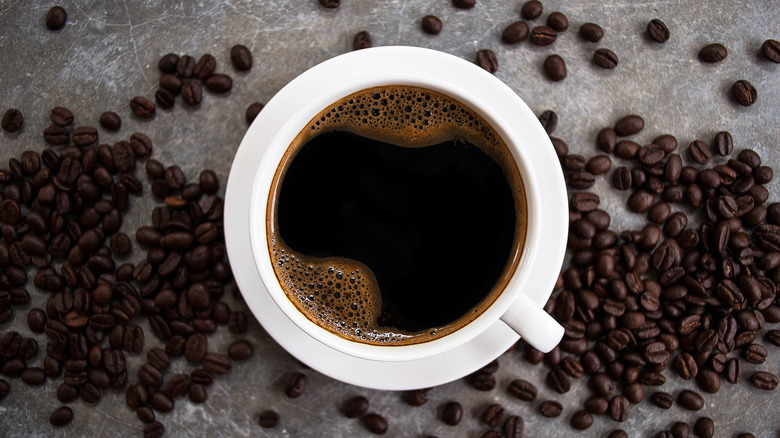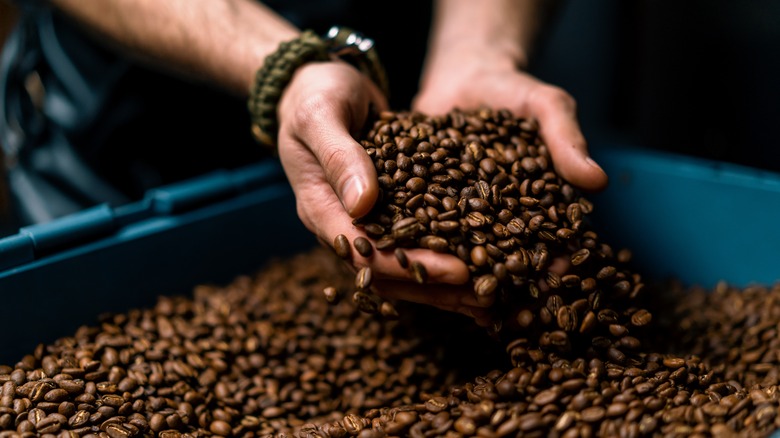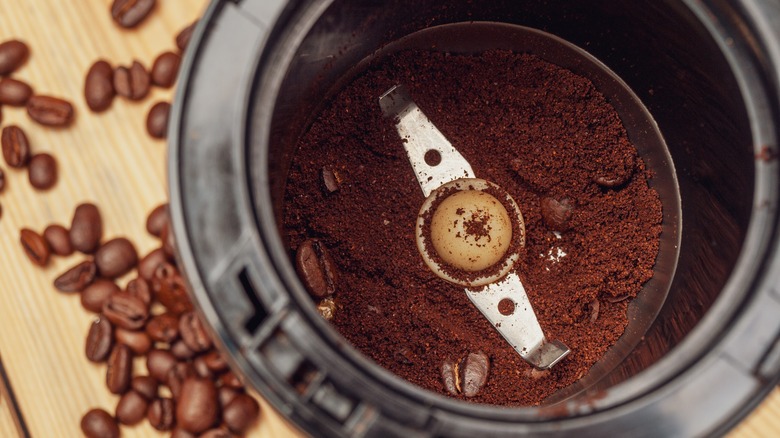Ever Wonder Why Decaf Coffee Tastes So Different From Regular Blends?
Some people find decaf coffee to have a smoother taste than regular coffee. More often than not, however, coffee lovers are not a fan of the decaf variety. People often peg the taste of decaf as astringent, which is rarely a desirable descriptive for a mug of morning brew. Others call it stale, and some go as far as branding it fake or damaged.
Decaf coffee is made by removing the majority of the caffeine from regular, un-roasted coffee beans. A few factors may be at play affecting the taste difference in a cup of decaf versus a regular cup of joe, and the most likely contributor is how this process is achieved. There are several different caffeine extraction methods, and the most common and cost-effective from a manufacturing standpoint uses solvents like ethyl acetate or methylene chloride. While they are safe, such chemicals are typically what is responsible for the taste differences. Adding to that, when solvents are used, some compounds that are responsible for the flavor may also be removed from the bean along with the caffeine.
The roasting step is also a taste making factor. Roasting decaf coffee beans is a bit like Goldilocks in that it's hard to get just right. The beans are vulnerable to being over-roasted, which can contribute to a more bitter and burnt taste than regular blends have. Conversely, the beans are also at risk of being under-roasted, which results in a milder flavor.
The main methods used for extracting caffeine from the beans
There are two solvent methods used. The direct method involves soaking the beans in a chemical to extract the caffeine, and then steaming them to remove any residue. The indirect method soaks the beans in hot water to lift the caffeine, and then separates the beans from the water. The caffeine evaporates from the water and it is then treated with a chemical solvent, which never comes in contact with the beans. After the chemical residue is removed from the water, the water is added back into the beans to restore lost flavor.
A non-solvent method, the Swiss water process, uses water and osmosis to extract the caffeine. The beans are soaked in hot water, which helps dissolve the caffeine, and then a carbon filter is used to remove the caffeine from the water. Then, just like regular coffee beans, they are then dried and roasted. This method is touted as a better way to preserve the flavor in decaf.
The CO2 method is another non-solvent approach that is similar to the Swiss water process but uses pressurized liquid carbon dioxide instead of water. This method is believed to be the best at retaining flavor, but unfortunately, it is also the most expensive and only used by mass coffee producers. Do keep in mind that no matter the extraction method, traces are often left in the beans, making it likely that just about all decaf does have some caffeine.
The best way to brew decaf coffee so it tastes like regular blends
Whatever mass-scale method was used to remove the caffeine, there are a few measures you can take to make different-tasting decaf just another one of the longstanding myths about coffee. First things first: Quality coffee is made from quality beans. In terms of taste, beans from a Swiss water process will probably get you closer to the real deal, but do the best you can. Decaf connoisseurs say a medium roast is optimal for flavor. Once you choose a top-tier coffee, opt for the whole beans and not pre-ground coffee. Grinding the beans at home to a medium-coarse will ensure maximum flavor.
Next, get the ratio right. Experts say to use 1 gram of coffee for every 15 grams of water for a strong brew, and 18 grams for a milder brew. Use fresh, filtered water and make it hot. Just below boiling, in fact. For brewing, some swear that pour over is the way to go for the best flavor. For an extra boost, proponents pour the water in a counterclockwise circle. However, a French press will work as will a moka coffee pot. An Aeropress instead of a French press is also an option as is a simple drip machine. A longer brew will yield a bolder taste, and vice versa. You can play around with both the ratio and the brew time to find your sweet spot. Lastly, store your decaf coffee in airtight container in a dry spot.



